Binoculars and field glasses are two types of optical devices that allow you to view distant objects up close. In these devices, light is gathered from a distance by objective lenses and then magnified and focused. Though they share similar looks and focusing mechanisms, there are subtle differences between binoculars and field glasses.
Each of these devices allows the user to see a more vibrant, sharper image, giving a clearer picture than with the naked eye. Whether you’re bird watching, hunting, or exploring a new territory, understanding the differences between these two will help you choose the right one for your adventure.
Want to know more about what sets field glasses apart from binoculars? We’re here to explain all that in our in-depth “Binoculars vs Field Glasses” comparison. So let’s get started right away!
What Are Binoculars?
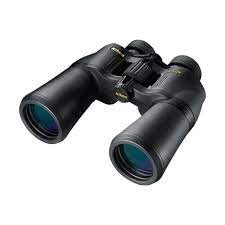
Binoculars are a type of optical device that feature two lenses mounted side by side. They allow you to magnify distant objects, making them appear larger and closer than they actually are.
A pair of binoculars usually offer higher magnification than field glasses and can be used in low-light conditions better. Most modern-day binoculars are Porro prism binoculars invented by Ignazio Porro around 1850.
However, binoculars were originally invented by Johan Freidrich Voigtlander in the early 1800s, and modern binoculars are typically found with a range of magnification powers. Many also come with features such as lenses that can be focused individually making them easier to use and eliminating astigmatism.
What Are Field Glasses?
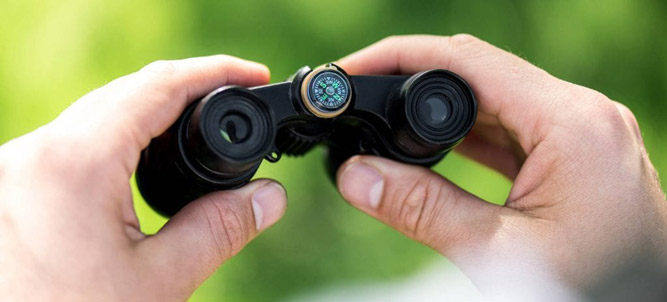
Also known as opera glasses, Field glasses are a type of optical device that feature just one lens. They allow you to magnify distant objects, making them appear larger and closer than they actually are. Field glasses usually offer lower magnification than binoculars do, but they can be easier to use in bright light conditions.
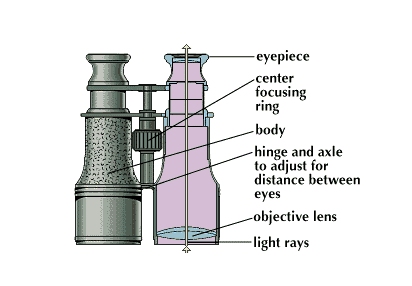
Field glasses were invented by Frederick William Voigtländer, the son of Johan Freidrich Voigtlander in 1840. Modern day field glasses usually come with features such as rubber eye cups, adjustable focusing, and anti-reflective coatings for better performance in bright sunlight. They are typically smaller than binoculars and easier to carry around.
Binoculars vs Field Glasses: How Do They Differ?
Binoculars have two lenses, while field glasses have just one lens. Binoculars also generally offer higher magnification than field glasses do, allowing you to see further away with greater clarity. Additionally, binoculars can be used in low-light conditions better than most field glasses can.
Let’s dive deep down to explore the differences between a pair of binoculars and field glasses one by one.
1. Field of View (FOV)
Binoculars
A manufacturer will measure the field of view of a binocular in feet at 1,000 yards, which is the view you would have if you measured it from 1,000 yards away.
Binoculars have a wider field of view (FOV) than field glasses due to the two lenses. This allows you to see more of a scene at once, making it easier to track moving objects. Remember, the field of view gets narrower/lower as you increase the magnification power.
Field glasses
Field glasses have a higher FOV than binoculars and can see further than 1,000 yards. The amount is determined by the type of field glasses you have.

Field Glasses Field glasses have a narrower field of view due to the single lens. This makes them better suited for viewing stationary objects, such as landscapes or distant buildings.
Winner
The one to choose here is the field glasses with their ability to see further than the 1,000 yards.
2. Durability
Binoculars
Binoculars are generally more durable than field glasses because they feature two lenses mounted side by side. It is much harder for the lenses to become damaged when using binoculars, as compared to the single lens of field glasses.
Modern binoculars also often come with hard rubber or plastic outer shells that offer additional resistance against impacts and scratches.
Field Glasses
Field glasses are often made from plastic and may be more prone to damage than binoculars. The single lens of the field glass can also be easily scratched or damaged if not handled with care, decreasing its performance over time.
However, unlike many advanced prism binoculars, field glasses don’t feature any prisms that can break accidently.
Winner
Binoculars come out on top here due to their durability and ability to withstand more impacts and scratches.
3. Versatility
Binoculars
Because of the two lenses, binoculars can be used in a variety of situations. They are ideal for bird watching, hunting, and observing wildlife at close range. Binoculars can also be used to observe objects at great distances and in low-light conditions better than field glasses.
Field Glasses
Field glasses have fewer uses due to their single lens design. They are best suited for viewing stationary objects such as landscapes or distant buildings where you can take your time to adjust the focal length.
Winner
Binoculars take the cake here as they are more versatile than field glasses and offer a wide range of uses.
4. Eyepiece lens
Binoculars
Binoculars have at least three eyepiece lenses arranged in two groups. The eyepiece lenses of binoculars are adjustable, which allows you to adjust the distance between your eyes and the lens (eye relief).
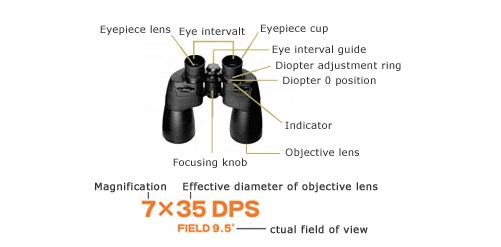
This makes it easier to get a clear view with both eyes open, reducing eye strain compared to using field glasses.
Field Glasses
Field glasses only have one eyepiece lens, so you cannot adjust the distance between your eyes and the lens. This can cause strain on your eyes if you are not comfortable with the positioning.
Also, Most field glasses come with an inverted image created by a concave eyepiece.
Winner
Binoculars are the better option with the extra features, and they have an adjustable eyepiece that makes it easier to get a clear view without straining your eyes.
5. Magnification
Binoculars
The magnification of binoculars can range from 6x to 20x. The higher the magnification, the better you will be able to view objects at a distance. However, higher magnifications also reduce the field of view and brightness of an image.
Field Glasses
Field glasses usually have lower magnification than binoculars, usually ranging from 4x to 10x. This lower magnification allows you to see wider scenes with more clarity and brightness than higher magnifications.
Galilean field glasses can only magnify objects through an objective lens.
Winner
Field glasses offer sharper image clarity and brightness due to their lower magnification compared to binoculars. However, if you need extended reach, then the higher magnifications of binoculars may be more suitable for your needs.
6. Weight
Binoculars
The last, but not least element of our “Binoculars vs Field Glasses” is the weight AKA portability. Binoculars are often heavier than field glasses due to the two lenses and additional parts. This makes them more cumbersome for long-term observation tasks.
Compact binoculars (Ex: roof prism binoculars) weigh under a pound or less. Zoom binoculars with large apertures, such as 10X56, may weigh more than three pounds.
Field Glasses
Field glasses usually weigh less than binoculars because they have a single lens and fewer parts. This makes them better suited for carrying around while you are out and about.
Winner
If you need something that is lightweight and easy to carry around, then field glasses are the ideal choice due to their lighter weight compared to binoculars. Depending on the model, basic field glasses weigh between 2-3 lbs
Field Glasses Vs Binoculars: Which One to Choose
When to Use Binoculars?
Hunting binoculars tend to be more popular because they offer a greater range of features and a higher magnification.
When it comes to a broader range of features, binoculars are superior, because they can be waterproof, shockproof, glare resistant, fog-proof, and much more.
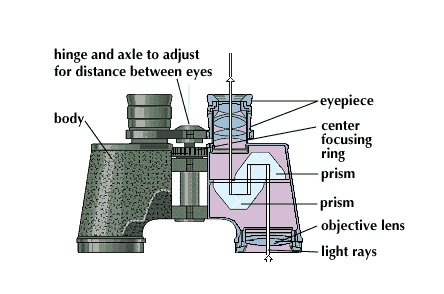
Binoculars are ideal for any situation where you need to observe distant objects or wildlife at close range. They can also be used in low-light conditions due to their adjustable eyepiece lens and higher magnification capabilities. Binoculars are perfect for bird watching, hunting, stargazing, and more.
When to Use Field Glasses?
Binoculars have a wider range of uses, but field glasses are simpler and cheaper.
Field glasses may do you for a day of deer hunting, but they do not provide the convenience, magnification, or mobility that binoculars offer.
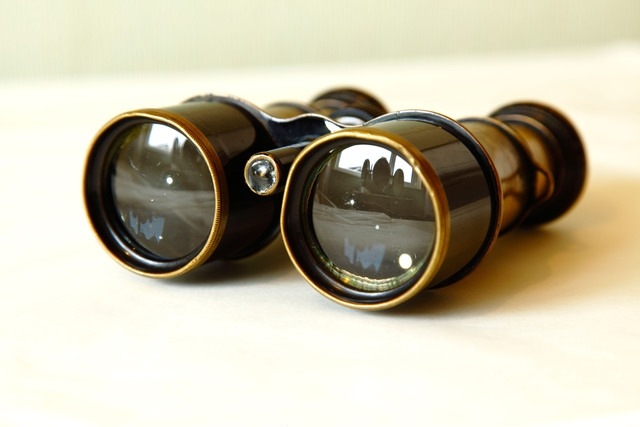
Field glasses are better suited for viewing stationary objects such as landscapes or distant buildings where you can take your time to adjust the focus. They can also be useful if you need something lightweight and easy to carry around while you are out and about.
And with that, this comparison guide has come to an end. We tried to provide an in-depth “field glasses vs binoculars” comparison to help you choose the best one for you.
Hope the information here helps you choose the perfect companion for your upcoming adventures. Thanks for reading this far, and I wish you all a great weekend ahead!
FAQs
Is a Larger Field of View Better For Binoculars?
Yes, a larger field of view is generally better for binoculars as it allows you to observe more of the scene at once. However, this comes at the cost of lower magnification and brightness.
Does Lens Size Matter In Binoculars?
Yes, lens size is an important factor to consider when buying binoculars. Larger lenses will let in more light, which can improve the brightness and clarity of your image. However, larger lenses also mean heavier weight and a higher price tag.
How Do You Adjust Field Glasses?
Field glasses can be adjusted by tweaking the focus ring on the side of the lens. This allows you to adjust the focal point of the lens, allowing you to get a clearer image. You may also need to adjust your distance from the lens in order to achieve optimal clarity.
Are Binoculars Useful at Night?
Yes, binoculars can be useful at night as they typically offer higher magnification than field glasses and are more adjustable. Some binoculars also come with image stabilization and night vision capabilities which can further improve their performance in low-light conditions.
Does Heat Affect Binoculars?
Yes, heat can affect the performance of binoculars. Excessive heat can lead to image distortion due to changes in the lenses and internal components. It is therefore important to store your binoculars in a cool, dry place; away from direct sunlight, when not in use.

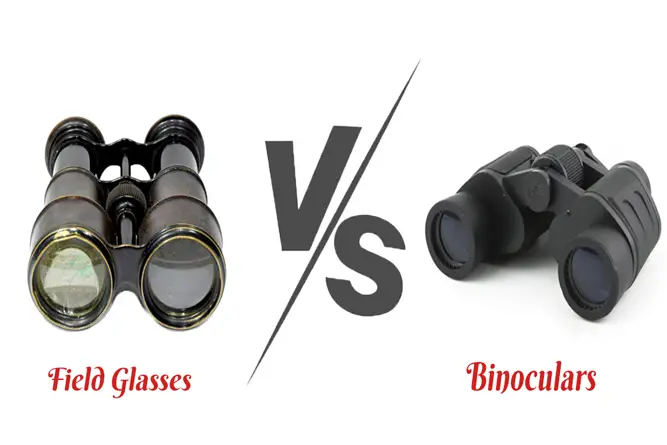



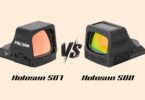
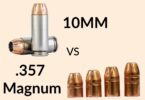


Leave a Comment